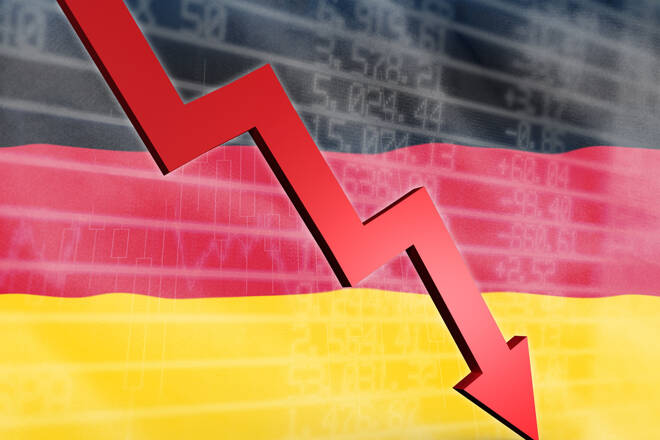Advertisement
Advertisement
European Equities: A Week in Review – 03/09/21
By:
It was a mixed weak for the European majors, with COVID-19 and weak economic data from China and the U.S, in particular, weighing on the majors.
In this article:
The Majors
It was a mixed week for the majors in the week ending 3rd September. Following modest gains from the week, prior, the DAX30 and the EuroStoxx600 fell by 0.45% and by 0.09% respectively. The CAC40 avoided the red, however, in spite of a 1.08% slide on Friday, with a modest 0.12% gain.
A particularly busy week on the economic calendar left the European majors on the defensive.
Weak data from China was of concern, with China’s private sector contracting in August, according the market’s preferred Markit survey.
Data from the U.S was also on the weaker side, adding to the negative mood as the Delta variant continued to impact.
The Stats
Private sector PMIs for August, French GDP, German unemployment, and prelim August inflation figures were in focus.
While inflationary pressures picked up once more in August, private sector PMIs delivered mixed results in the week.
According to prelim figures, the Eurozone’s annual rate of inflation accelerated from 2.2% to 3.0% in August. The core annual rate of inflation picked up from 0.7% to 1.6%.
French GDP numbers for the 2nd quarter were also upbeat, with the French economy expanding by 1.1% in Q2. In the previous quarter, the French economy had stagnated.
While Germany’s unemployment rate fell from 5.6% to 5.5% in July, retail sales slid by 5.1%, reversing a 4.5% increase from June. French consumer spending was also woeful, falling by 2.2%. In June, consumer spending had risen by just 0.3%.
Private sector PMIs were weaker but not weak enough to cause a stir.
The Eurozone’s composite PMI fell from 60.2 to 59.0, which was down from a prelim 59.5. In August, the Eurozone’s services PMI fell from 59.8 to 59.0, with the manufacturing PMI declining from 62.8 to 61.4.
From the U.S
Early in the week, consumer confidence figures delivered yet more bad news. In August, the CB Consumer Confidence Index fell from 129.1 to 113.8, as the Delta variant continued to spread.
ADP nonfarm employment change figures on Wednesday also failed to impress. Nonfarm payrolls increased by 374k in August following a modest 326k rise in July.
On Thursday, jobless claim figures were somewhat better, with claims falling from 354k to 340k in the week ending 27th September.
At the end of the week, however, it was official nonfarm payroll figures that were key.
Falling well short of a forecasted 665k increase, payrolls rose by just 243k in August. In July, payrolls had jumped by 1,053k.
In spite of the weak number, the unemployment rate fell from 5.4% to 5.2% to further muddy the waters on FED policy.
From the private sector, the numbers were mixed. The ISM Manufacturing PMI rose from 59.5 to 59.9, while the all-important Non-Manufacturing PMI fell from 64.1 to 61.7.
The Market Movers
From the DAX, it was a mixed week for the auto sector. BMW and Volkswagen saw gains of 1.43% and 0.90% respectively, while Continental and Daimler ended the week down by 3.16% and by 1.54% respectively.
It was a bullish week for the banking sector, however. Deutsche Bank rose by 0.38%, with Commerzbank rallying by 3.42%.
From the CAC, it was a mixed week for the banks. BNP Paribas and Credit Agricole rose by 0.77% and by 0.08% respectively, while Soc Gen slipped by 0.41%.
It was a bearish week for the French auto sector, however. Stellantis NV fell by 0.49%, with Renault sliding by 3.40%.
Air France-KLM and Airbus ended the week down by 2.68% and by 0.47% respectively.
On the VIX Index
It was a back into the green for the VIX in the week ending 3rd September, marking just the 3rd weekly gain in 7-weeks.
Following an 11.69% fall from the previous week, the VIX rose by a modest 0.12% to end the week at 16.41.
2-days in the green from 5 sessions, which included a 1.79% gain on Tuesday delivered the upside.
For the week, the NASDAQ rallied by 1.55%, with the S&P500 gaining 0.58%. The Dow fell by 0.24%, however.
The Week Ahead
It’s another busy week ahead on the economic calendar, with the German economy in focus.
German factory orders and industrial production figures will be in focus on Monday and Tuesday.
On Thursday, German trade data will also draw plenty of attention.
ZEW Economic Sentiment figures for Germany and the Eurozone will also influence on Tuesday.
The main event of the week, however, will be the ECB monetary policy decision.
With the markets expecting the ECB to stand pat on policy, the focus will be on the ECB Press Conference. Will the ECB continue to see reflation as transitory?
From the U.S, it’s a quieter week, however, with JOLTs job openings and weekly jobless claims the key stats. At the end of the week, wholesale inflation figures will also draw interest, however.
Economic data from China will also provide direction following the weak PMI numbers from the week prior.
Inflation and trade data for July are due out in the week.
About the Author
Bob Masonauthor
With over 20 years of experience in the finance industry, Bob has been managing regional teams across Europe and Asia and focusing on analytics across both corporate and financial institutions. Currently he is covering developments relating to the financial markets, including currencies, commodities, alternative asset classes, and global equities.
Latest news and analysis
Advertisement
